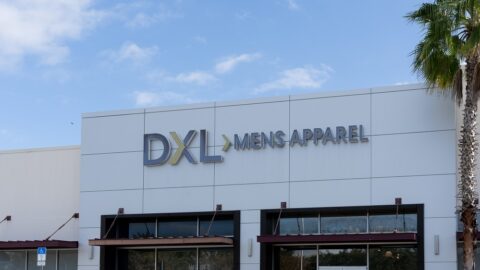In the apparel vertical, the stakes involved in making accurate product forecasts have always been high. Retailers that order too much of a given product must discount to move merchandise in order to make space for the next season’s items — but if they order too little, they miss out on potential sales and disappoint their customers.
Needless to say, the disruptions stemming from COVID-19 have made apparel forecasting that much harder. Brad Eckhart, a 30-year retail executive with experience at companies including Finish Line and Ralph Lauren, advises apparel retailers to “plan conservatively” for holiday 2020 and beyond. “It’s always easier to ‘chase’ inventory than to live with over-ordering,” said Eckhart, now a Partner at Columbus Consulting, in an interview with Retail TouchPoints.
More important than the size of future orders, however, is their channel destination — full-price stores, outlets or e-Commerce sales. Unfortunately, retailers are struggling with a lot of what former Secretary of Defense Donald Rumsfeld termed “unknown unknowns,” including what percentage of consumers will stick with online apparel shopping when stores eventually reopen; the impact of promotional activity; and the future destiny of shopping malls.
Retail TouchPoints (RTP): It’s become a cliché to say this year is unprecedented, but is that really the case when it comes to the impact on retail forecasting?
Brad Eckhart: It’s unprecedented in that almost everyone is dealing with these issues, that it’s not limited to a single retailer or category. While the industry as a whole has never faced this kind of issue in the past, most of us in retail have faced similar situations at a category level. In fashion apparel, which can operate with a nine-month lead time, we were used to constantly having to cancel orders or “chase” goods that we needed.
RTP: What have been some of the immediate impacts on apparel retailers, particularly those selling seasonal merchandise?
Eckhart: At Columbus Consulting, we’re not hearing that retailers are all doom and gloom and swimming in inventory. It’s true that consumer mindsets have changed so much, and that fashion apparel is not on their minds. But retailers who were smart and acted fast would have looked forward [when COVID-19 first hit] and cancelled orders they had already placed. That essentially meant cancelling their transitional season deliveries, extending their summer selling season into July and August and then moving straight into fall.
RTP: What should retailers keep in mind as they do their forecasting for the Q4 holiday season?
Eckhart: The big challenge is planning the mix of what will be sold via brick-and-mortar and online, and how that affects different product categories. That’s all impacted by the complexity of the assumptions retailers have to make, and how many different scenarios they need to plan for. For example, we don’t know how much of the shift to online will stick to online purchases: is it 10% [of the COVID-19 shift], or 80%? That depends on the product category we’re talking about, but it’s also about the retailer’s online sophistication pre-COVID. I really feel for those retailers that weren’t very sophisticated online and who are now scrambling to catch up.
The mix of online versus in-store is really the big question mark, because it plays a critical role in not just inventory planning but all of supply chain planning. It also depends on what promotional activities are going to occur: retailers’ marketing strategies will change significantly based on inventory levels and on consumers’ response.
We’ve seen marketing changes already with TV ads that are more “COVID-friendly.” For example, if you have an ad that shows people shaking hands, then that brand is not speaking to the current situation in the right way.
Probably the most fluid thing, the one that I would really be concerned about, is a situation where COVID-19 is not improving. That raises a number of questions: How will consumers be celebrating the holidays? Are they going to get together, or will that not happen? Does that mean that customers won’t be going to malls to the same degree that they have in the past, and that the online shift will continue through the holiday season? If so, what does that mean for what retailers are going to have for sale online versus what they offer now?
RTP: Traditionally, a significant portion of consumers have been reluctant to buy clothing online. How much has COVID-19 changed those attitudes?
Eckhart: I predict that consumers are going to be more willing to buy products online that they weren’t willing to before. They may be taking more risks in terms of trying product categories. During this time period, everyone has bought something online, and some have never bought apparel online before. And the minute you buy something based on a click from an ad, you’re on the retailer’s mailing list and you’re in their analysis of how they’re putting ads online.
Another factor is that consumers get more confidence as they buy things online. Overall brand loyalty is suffering as a result of COVID, with people trying brands they’ve never heard of because they’re going for the products that are available. There’s a continuum [of brand loyalty] from toilet paper all the way up to apparel.
RTP: What would be your advice for retailers doing their planning for 2021?
Eckhart: I would advise them to plan conservatively. It’s always easier to “chase” inventory than to live with over-ordering.
Another thing that plays into these calculations is a retailer’s real estate strategy. Retailers have been talking about renegotiating leases, remodeling or closing stores, and all those conversations will be 10 times more difficult than they are now. There are questions about whether some malls will even exist next spring. That calls for retailers to be conservative, not just in terms of projecting comp store sales but also in terms of real estate.













